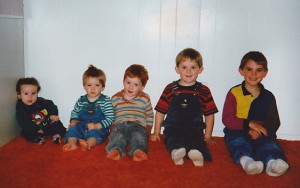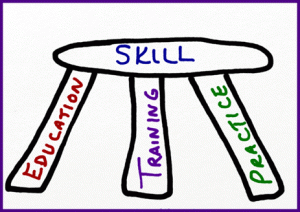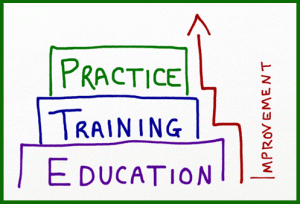A surprising number of people honestly believe that they already know everything they need to know about self-defense once they have learned to yank a trigger at the range. This is emphatically not true! Self-defense is about being able to hit your target, but it’s not only about that. It’s not just about being able to punch a hole in a piece of paper on a quiet day at the range with your friends.
In our more rational moments, we all know this. That’s why it always gets a laugh when a new student says, “Well, if I ever get attacked by a piece of cardboard that gives me three minutes to aim and pull the trigger, I’m good!” The other students always laugh because they know that’s not true. They know there’s more to it than that.
Criminals aren’t like paper targets: they don’t stand still, they don’t move in predictable patterns, and they don’t play fair. They move quickly and erratically and do unexpected things.
Innocent bystanders aren’t like paper targets, either. You can’t simply patch one up with a piece of tape and a blushing excuse. It’s a little more serious than that when you shoot the wrong target in real life.
Being prepared to cope with violent crime means knowing how criminal events typically unfold. It means knowing what danger looks like so you can avoid it. It means understanding the dynamics of violence and how ordinary people sometimes do things that increase their risk of suffering the effects of violence. It means being able to read body language, especially the body language that precedes a violent assault.
Being prepared to cope with violent crime means being prepared to hit targets that move quickly, erratically, and unexpectedly. It means being aware of what’s going on behind the primary threat. It means being determined to shoot a living, breathing, moving human being if needed. It means having enough confidence in your skills that you can pull the trigger without any hesitation whatsoever, even if someone you love is standing right next to the bad guy. It means being so well-practiced at drawing the gun that you don’t fumble around with it when you go to get it out of the holster. It’s in your hand the moment you think you need it, just as a good driver finds the brake pedal under her foot when she wants to stop the car, without needing to consciously remember which pedal is the gas and which the brake.
Being prepared to cope with violent crime means knowing how to load your own gun. It means you’re able to get the gun ready to fire on your own, doing so quickly and smoothly even if your gun wasn’t in the condition you expected it to be in when you picked it up. It means understanding how your gun works so well that if something goes wrong when you pull the trigger, your hands can clear the malfunction without you needing to waste brain cells figuring out what happened or what to do about it. It means knowing how to shoot when you only have one hand available. It means being able to adjust your speed to the distance and time requirements of the shot you must make.
Being prepared to cope with violent crime means knowing means being able to make smart choices about when to use your gun or when to hold fire. It means being able to make smart choices about where to aim when you do decide to shoot – even if you can only see part of your attacker and even if your attacker isn’t coming from the angle you expect.
Being prepared to cope with violent crime means knowing how to use cover or concealment effectively, and how to get good hits from weird positions if you need to. It means knowing that you can hit your target even if your glasses get knocked off in a struggle, even if it’s dark out, even if you can’t see the sights well and you’re moving and the target is moving and you don’t have any time at all.
Being prepared to cope with violent crime means having a great deal of confidence in your abilities, and it means you have some skills that go beyond what you need for target shooting with friends at the range. It means you know what to say to arriving officers, and what not to say. It means you know the rules of the road for using your firearm in a legal manner. It means you have some understanding of what might happen after a violent encounter with a criminal.
All of this only lists a few of the skills needed for self-defense. It does not discuss any of the specialized knowledge you might need in order to avoid trouble in the first place, or any of the skills you might need within the lower categories of force other than deadly force. It does not address the legal aspects of using violence to protect yourself from violent crime. It does not even begin to touch the ethical, moral, and social dilemmas that accompany making such a decision. All of these are issues that any thinking person needs to confront when she decides to carry a lethal weapon to protect herself and the people she loves.
Being able to punch a hole in a piece of paper is easy. Learning to reliably defend yourself from violent crime? That takes more work. I’m always impressed with people who decide to do the hard work it takes to learn how to defend themselves effectively.








